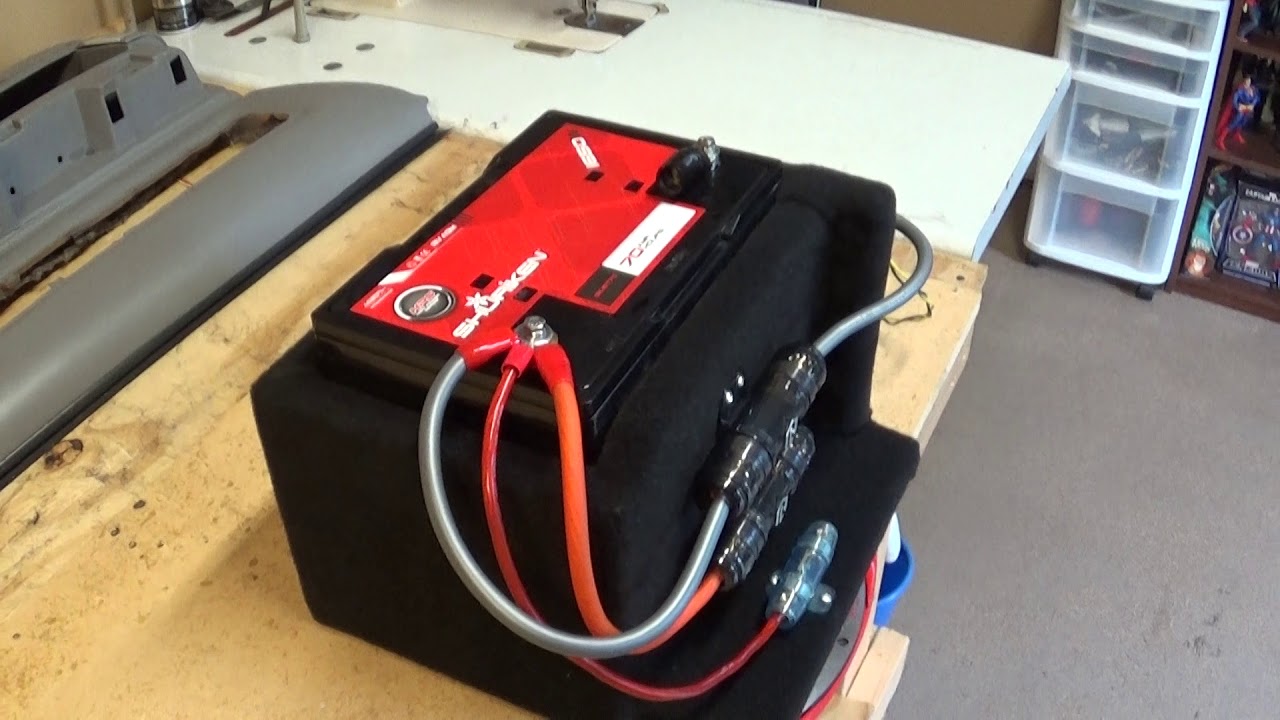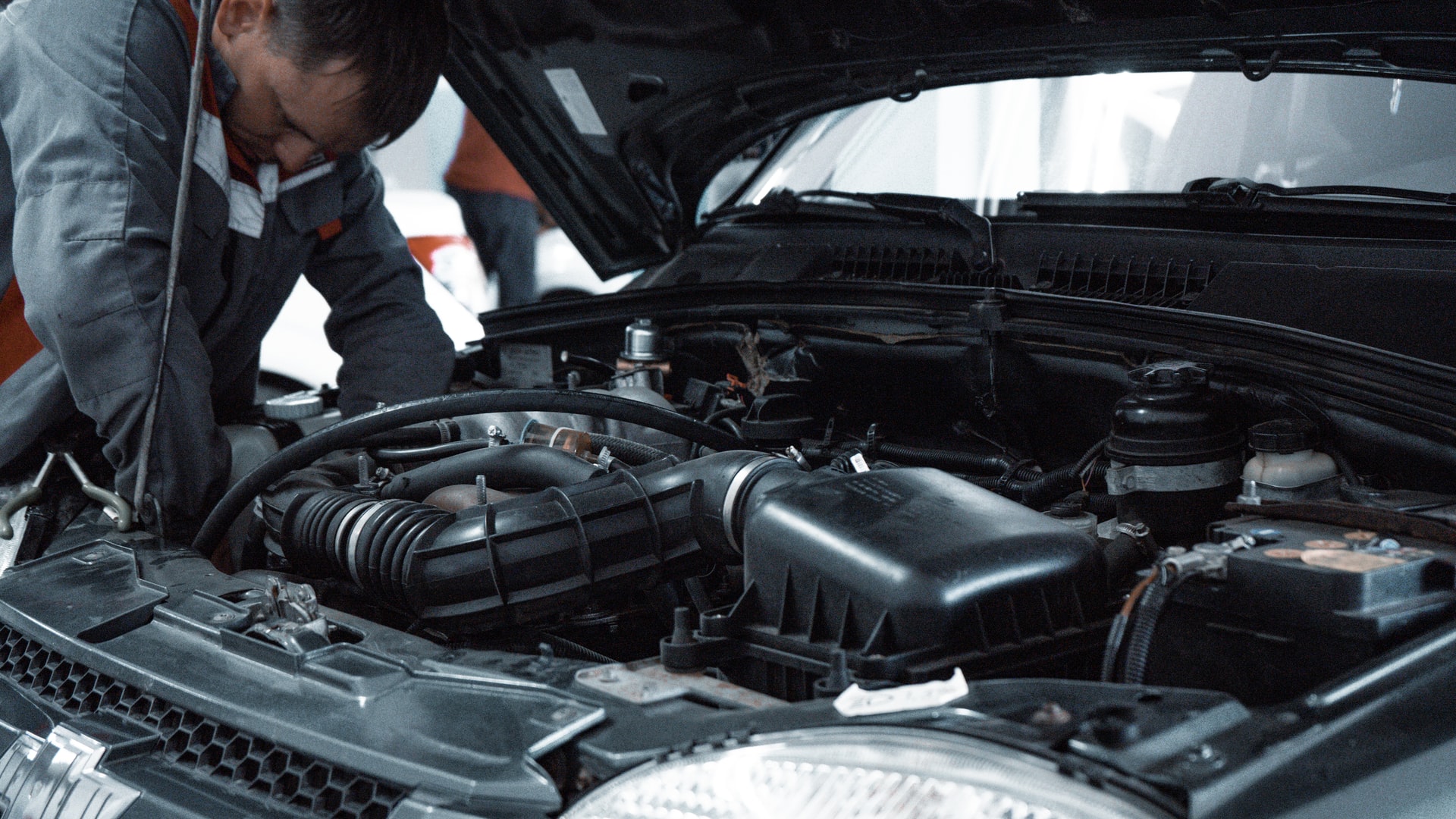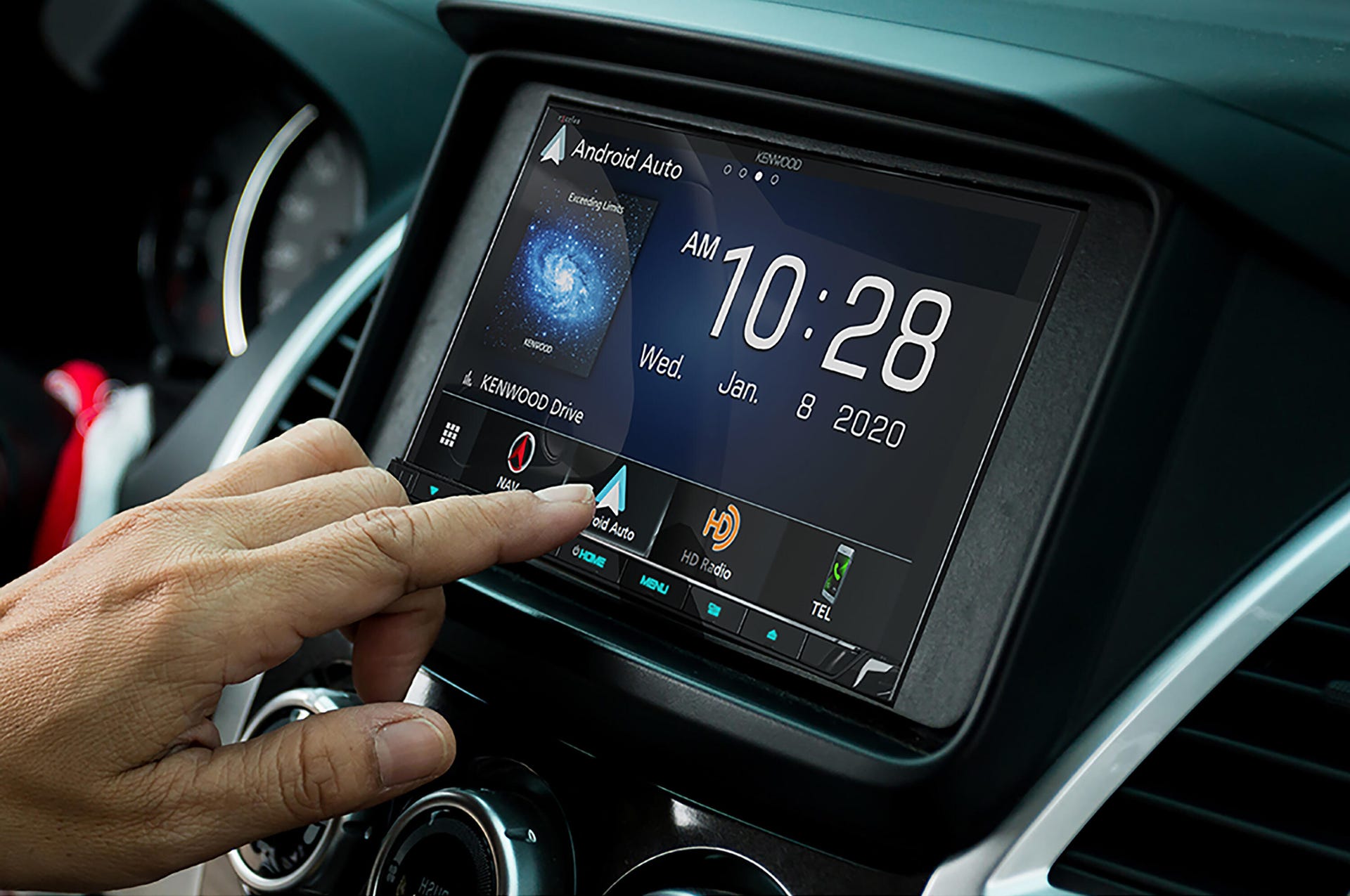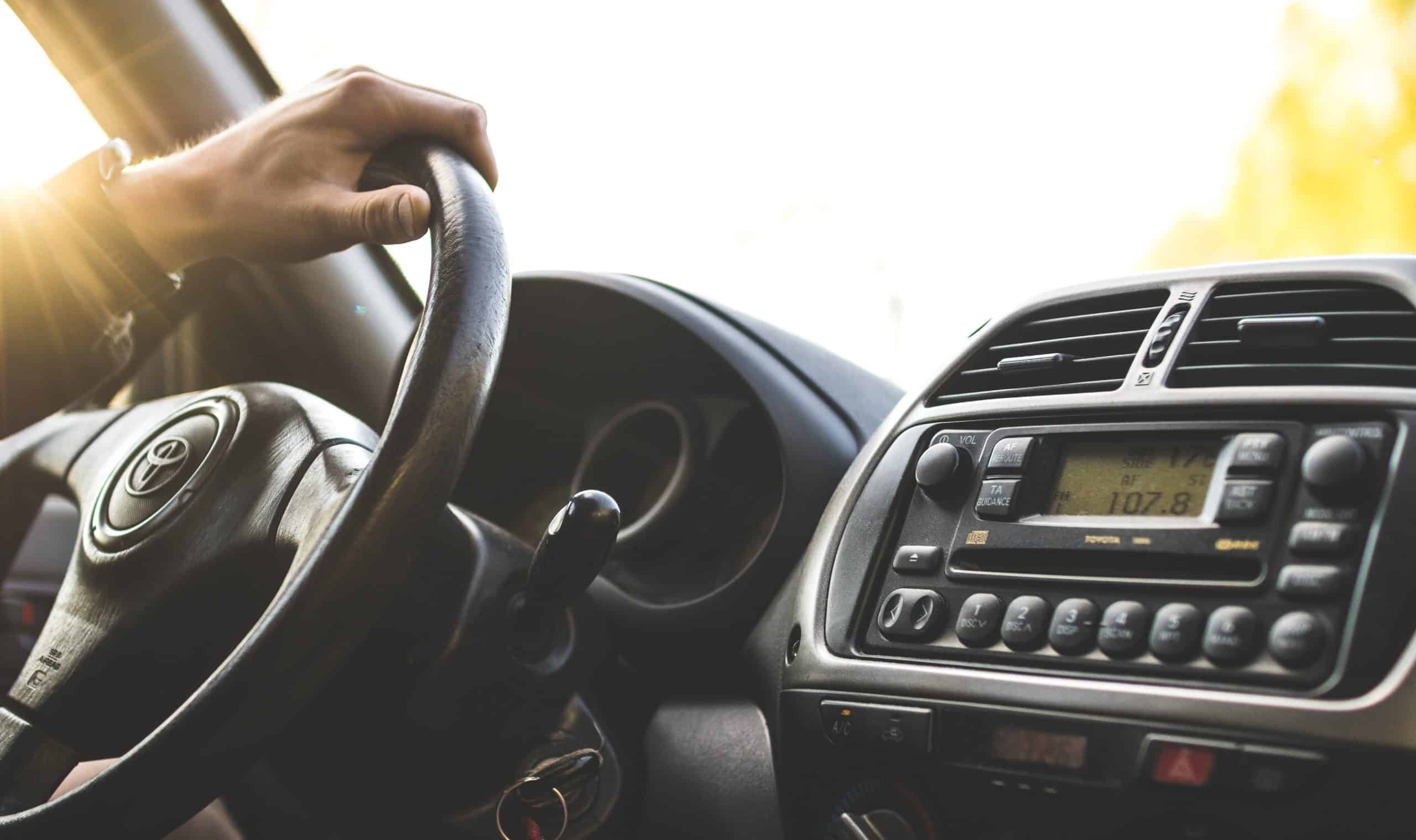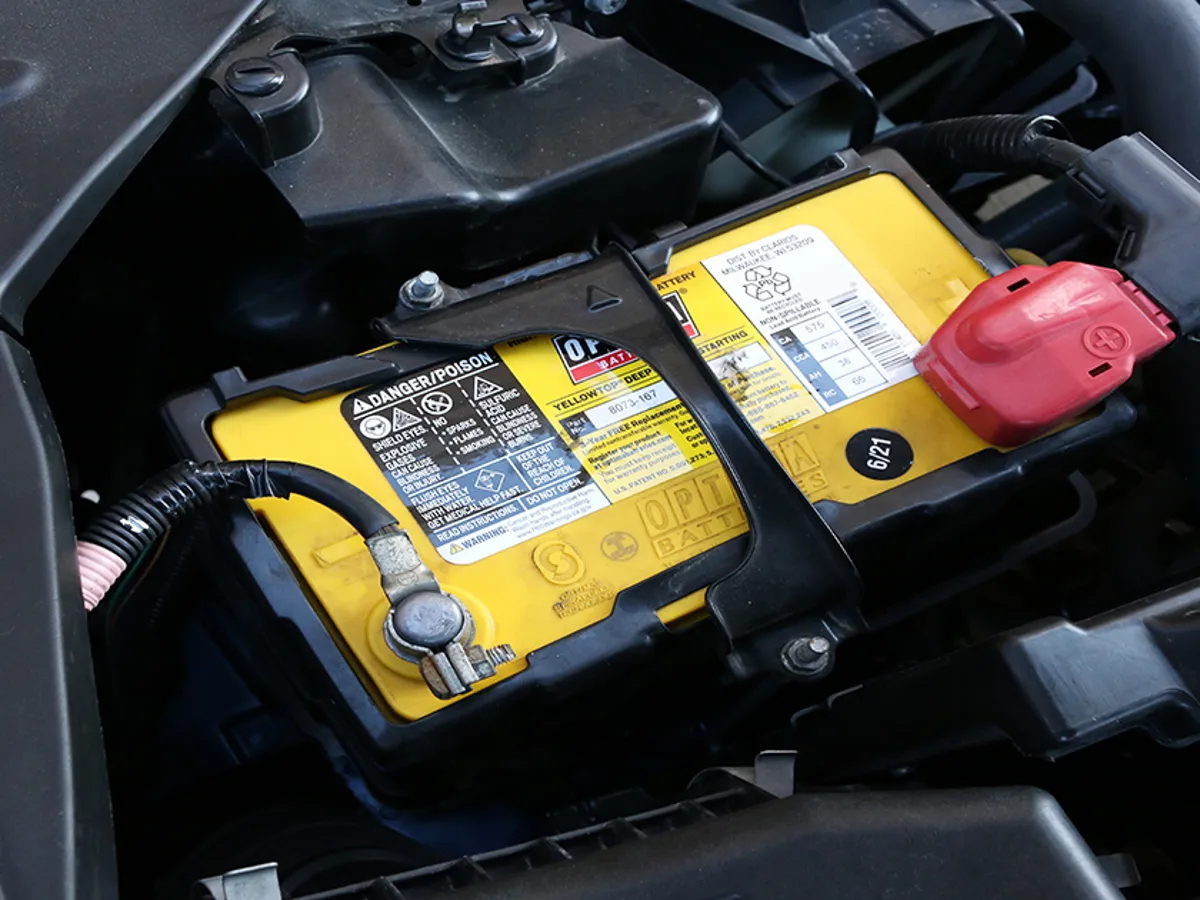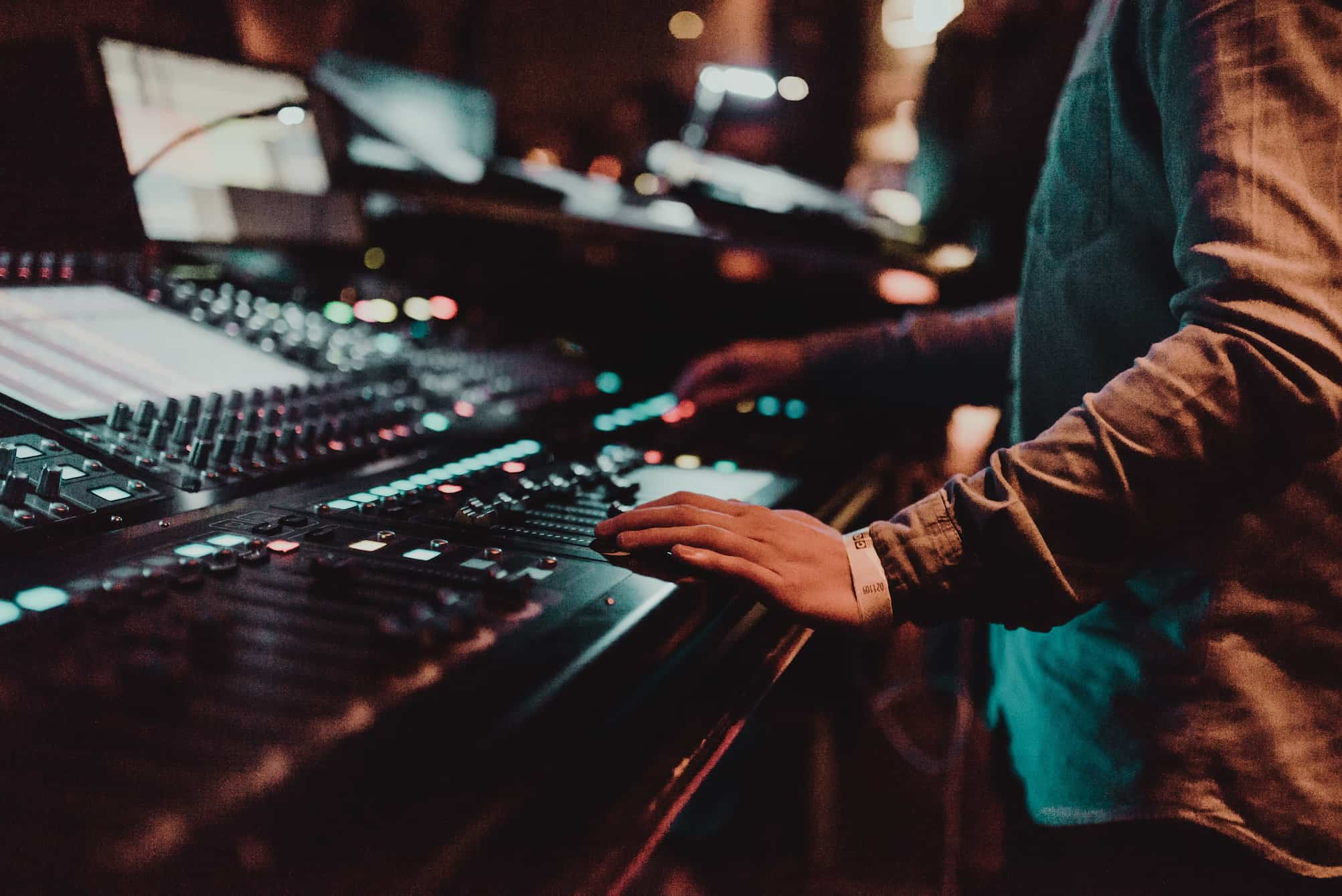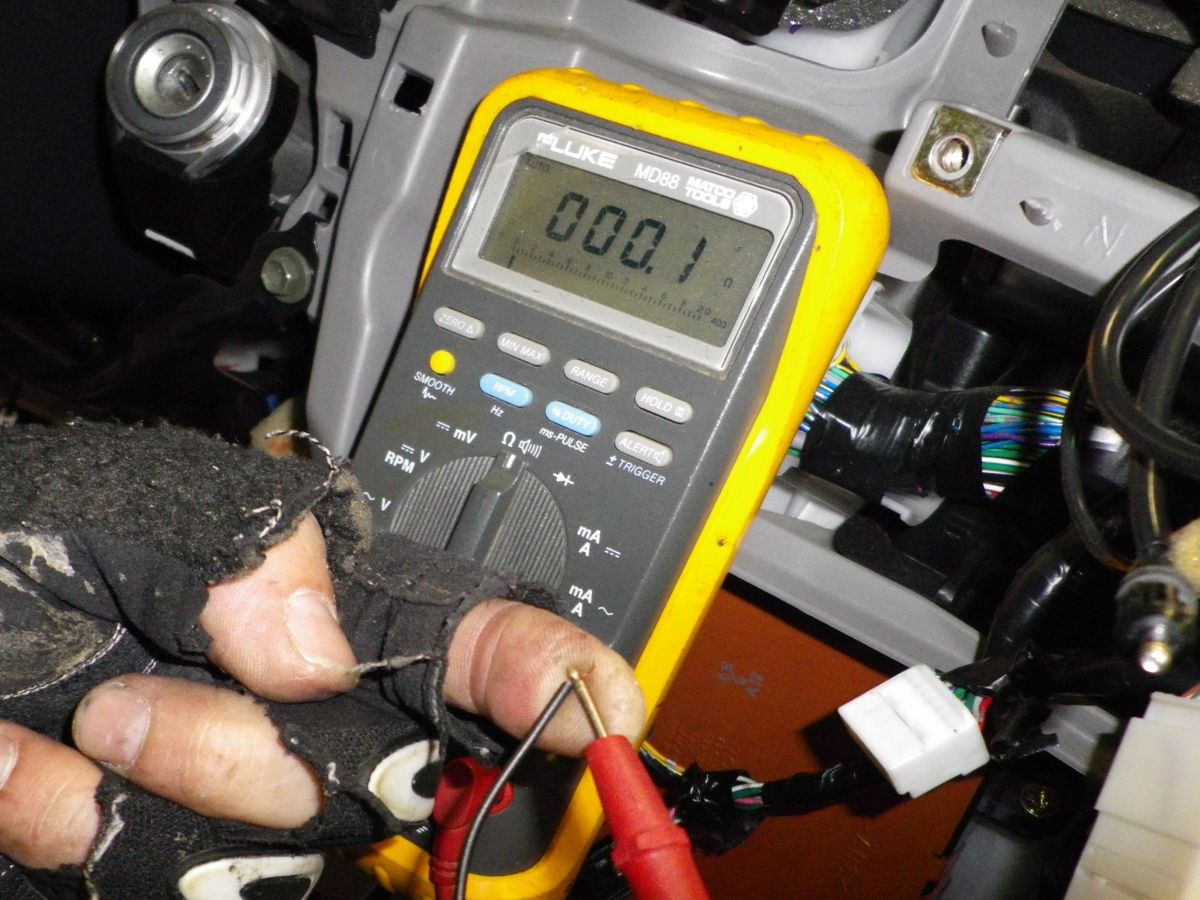Home>Production & Technology>Stereo>How Long Can A Car Battery Run A Car Stereo With The Engine Off
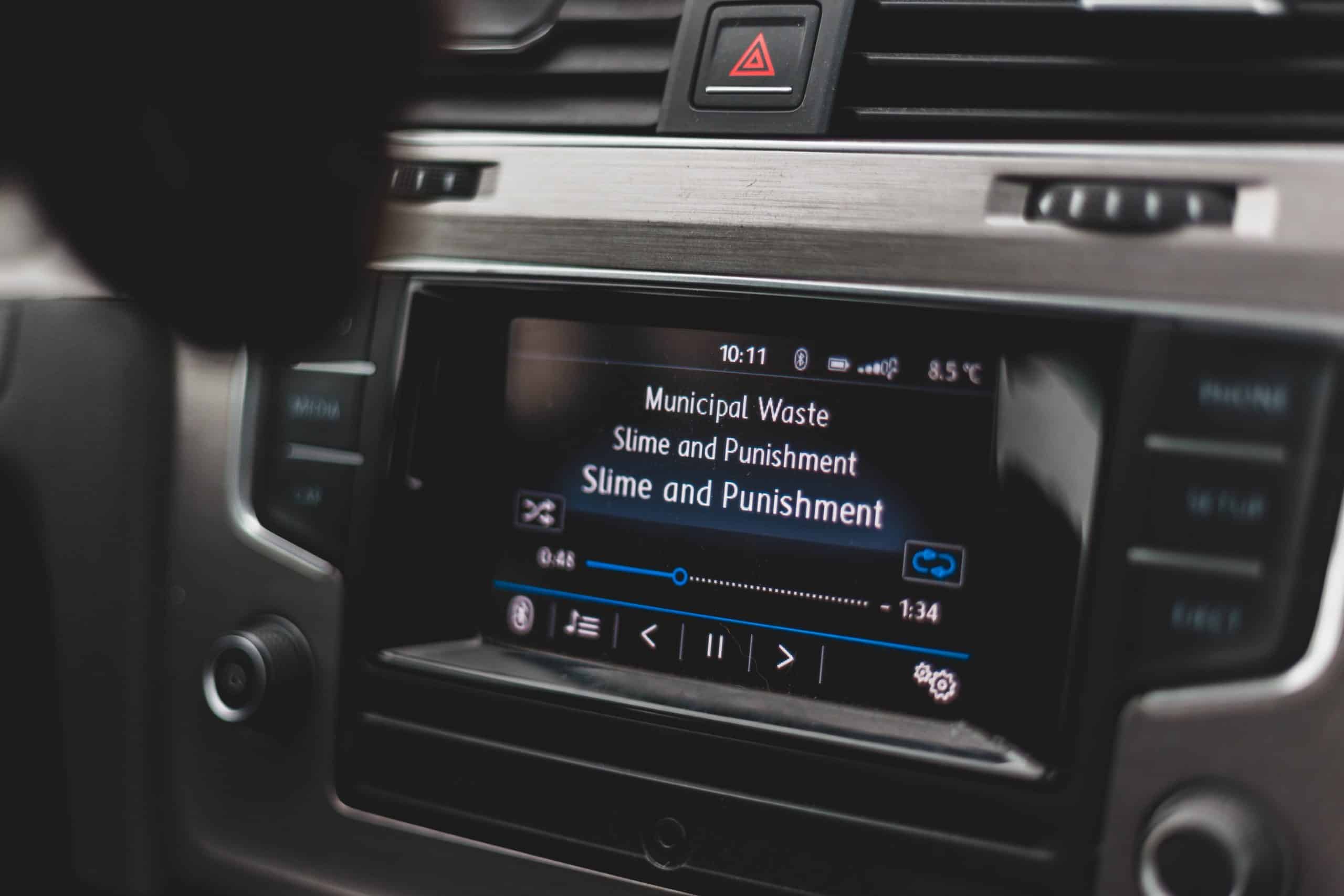

Stereo
How Long Can A Car Battery Run A Car Stereo With The Engine Off
Modified: January 22, 2024
Discover how long a car battery can power a car stereo without the engine running. Learn about the endurance of car batteries for stereo systems and optimize their usage.
(Many of the links in this article redirect to a specific reviewed product. Your purchase of these products through affiliate links helps to generate commission for AudioLover.com, at no extra cost. Learn more)
Table of Contents
- Introduction
- Factors Affecting the Car Battery’s Ability to Run a Car Stereo with the Engine Off
- Battery Capacity and Reserve Capacity
- Power Consumption of the Car Stereo
- Estimated Time a Car Battery Can Run a Car Stereo with the Engine Off
- Tips to Extend the Car Battery’s Life While Using the Car Stereo with the Engine Off
- Conclusion
Introduction
Car stereo systems have become an integral part of our driving experience, providing entertainment and enhancing the overall atmosphere inside the vehicle. Many modern car stereos are equipped with advanced features such as Bluetooth connectivity, touchscreen displays, and even built-in navigation systems. While these features can greatly enhance our driving experience, they also rely on the car battery to operate.
It’s common for car owners to enjoy their car stereo even when the engine is turned off, particularly during camping trips, picnics, or while waiting for someone. However, using the car stereo with the engine off can quickly drain the car battery, leaving you stranded and unable to start your car.
In this article, we will explore the factors that affect a car battery’s ability to run a car stereo with the engine off, the estimated time a car battery can power a car stereo, and tips to extend the battery’s life while enjoying your favorite tunes. So, if you’re wondering how long you can play your car stereo without starting the engine, keep reading!
Factors Affecting the Car Battery’s Ability to Run a Car Stereo with the Engine Off
When it comes to running a car stereo with the engine off, there are several key factors that can impact the ability of the car battery to sustain power. Understanding these factors can help you make informed decisions and avoid unnecessary battery drain.
- Battery Capacity: The capacity of your car battery plays a crucial role in determining how long it can power the car stereo. Battery capacities are typically measured in amp-hours (Ah) or milliamp-hours (mAh). The higher the capacity, the longer the battery can provide power.
- Reserve Capacity: Reserve capacity is another important factor to consider. It refers to the number of minutes a fully charged battery can sustain a minimum voltage output without the engine running. A higher reserve capacity means the battery can power the car stereo for a longer period.
- Power Consumption: The power consumption of your car stereo system is also crucial. Different stereo systems have varying power needs, with higher-end systems often requiring more power to operate. It’s important to check the power specifications of your stereo to determine its power consumption.
- Other Electrical Accessories: Keep in mind that other electrical accessories in your car, such as lights and power outlets, also draw power from the battery. Running these accessories simultaneously with the car stereo can significantly reduce the battery’s ability to power the stereo alone.
- Battery Health: The overall health of your car battery will impact its ability to provide sustained power. Over time, batteries can lose capacity and become less efficient at holding a charge. Regular maintenance and battery checks are essential to ensure optimal performance.
It’s important to remember that these factors are interconnected, and the actual time your car battery can power the car stereo with the engine off will depend on a combination of these elements. In the next section, we will estimate the typical time a car battery can run a car stereo without the engine running.
Battery Capacity and Reserve Capacity
When it comes to running a car stereo with the engine off, the battery’s capacity and reserve capacity are crucial factors to consider. Let’s dive deeper into these concepts to understand their significance.
Battery Capacity: The battery capacity refers to the amount of electrical charge it can store. It is typically measured in amp-hours (Ah) or milliamp-hours (mAh). A higher battery capacity means it can provide power for a longer duration. For example, a battery with a capacity of 50Ah can theoretically provide 1 amp of power for 50 hours or 2 amps of power for 25 hours.
Reserve Capacity: Reserve capacity is a measure of the battery’s ability to sustain a minimum voltage output without the engine running. It is usually expressed in minutes. A higher reserve capacity indicates that the battery can power the car stereo for a longer period before its voltage drops to a critical level.
It’s important to note that the reserve capacity values provided by manufacturers are typically based on a specific load, such as a 25-amp draw. As the power consumption of your car stereo may vary, the reserve capacity may also vary in real-world scenarios.
Additionally, it’s essential to keep in mind that the battery’s capacity and reserve capacity can be affected by various factors, such as age, temperature, and usage patterns. Over time, batteries can lose capacity and become less efficient, impacting their ability to provide sustained power.
To maximize the battery’s capacity and reserve capacity, it’s recommended to follow these tips:
- Keep your battery properly maintained by regularly checking the electrolyte levels (for non-sealed batteries) and keeping the terminals clean.
- Avoid deep discharges, as they can accelerate battery capacity loss. If possible, recharge the battery before it reaches a critically low voltage.
- Extreme temperatures can also affect the battery’s performance. If you live in an area with extreme weather conditions, consider taking additional precautions, such as using insulation blankets or parking in shaded areas.
- Limit the use of electrical accessories when running the car stereo with the engine off to reduce overall power consumption and extend the battery’s ability to power the stereo.
By understanding and optimizing the battery’s capacity and reserve capacity, you can maximize the time your car battery can power the car stereo without running the engine.
Power Consumption of the Car Stereo
Understanding the power consumption of your car stereo is essential when considering how long your car battery can run the stereo with the engine off. The power consumption is typically measured in watts and can vary depending on the specific model and features of your stereo system.
The power consumption of a car stereo includes not only the energy required to play music but also the energy needed to operate additional features like displays, touchscreen interfaces, built-in amplifiers, and Bluetooth connectivity.
High-end car stereo systems with advanced features tend to have higher power requirements compared to basic or factory-installed stereos. These systems often have built-in amplifiers and powerful speakers, which can significantly increase the power consumption.
It’s important to review the specifications provided by the manufacturer to determine the power consumption of your particular car stereo system. The power consumption is usually indicated in the user manual or on the product’s website.
Once you have the power consumption information, you can calculate the approximate amount of current (in amps) that the stereo system draws from the battery. This can be done by dividing the power consumption (in watts) by the car’s operating voltage (usually around 12 volts).
However, keep in mind that power consumption can vary depending on how you use your car stereo. For instance, playing music at higher volumes or operating additional features like subwoofers or equalizers can increase power consumption.
It’s crucial to consider the power consumption of your car stereo in relation to the battery’s capacity and reserve capacity. This will help you estimate how long your battery can power the stereo without the engine running. In the next section, we will provide some estimates for the typical time a car battery can run a car stereo with the engine off.
Estimated Time a Car Battery Can Run a Car Stereo with the Engine Off
The estimated time that a car battery can power a car stereo with the engine off depends on various factors, including the battery’s capacity, reserve capacity, and the power consumption of the stereo system. While it’s challenging to provide an exact figure since every situation is unique, we can provide some general estimates.
As a rule of thumb, a car battery with a capacity of around 50 amp-hours (Ah) can typically provide power to a car stereo for several hours with the engine off. However, this estimate may vary depending on factors like the stereo’s power consumption and the battery’s reserve capacity.
Let’s consider a scenario where you have a battery with a capacity of 50Ah and a stereo system that draws an average of 2 amps of current while playing music. In this case, the battery would theoretically be able to power the stereo for around 25 hours (50Ah / 2A = 25 hours).
Keep in mind that this is a simplified estimate and doesn’t take into account variables like the battery’s state of charge, temperature, and other electrical accessories in the car that may also draw power from the battery.
The reserve capacity of the battery is also crucial in determining how long the stereo can run. If the reserve capacity is, for example, 100 minutes, the battery can sustain the stereo for that duration before its voltage drops to a critical level. However, if you have other electrical accessories running simultaneously, the reserve capacity may be reduced.
To get a more accurate estimate of how long your battery can power a car stereo with the engine off, it’s best to consult the specifications provided by the battery manufacturer and the car stereo’s power consumption details. Additionally, monitoring your battery’s voltage over time can give you an idea of its performance and help you gauge its ability to sustain power.
Remember, these are rough estimates, and actual results can vary based on different factors. It’s always recommended to take precautions and not drain the battery completely to ensure you have enough power to start your car when needed.
In the next section, we will provide some tips to help you extend your car battery’s life while enjoying your car stereo with the engine off.
Tips to Extend the Car Battery’s Life While Using the Car Stereo with the Engine Off
If you enjoy using your car stereo with the engine off, it’s important to take precautions to extend your car battery’s life and avoid unexpected battery drain. Here are some tips to help you maximize your battery’s performance:
- Limit Usage: While it may be tempting to enjoy your car stereo for extended periods, try to limit the usage when the engine is off. The longer you use the stereo, the more power it draws, which can drain the battery faster. Be mindful and use the stereo in moderation.
- Monitor Battery Voltage: Keep an eye on your battery’s voltage levels. Many cars have built-in voltage meters or battery monitoring systems that can give you an idea of the battery’s condition. If the voltage drops to a low level, it’s time to start the engine to recharge the battery.
- Use Energy-Efficient Settings: Adjusting the settings on your car stereo can help minimize power consumption. Lowering the volume, disabling unnecessary features like equalizers or subwoofers, and dimming the display can all contribute to reducing power draw on the battery.
- Avoid Extreme Temperatures: Temperature extremes can affect battery performance. Try to avoid leaving your car in extreme heat or cold for prolonged periods, as it can impact the battery’s ability to hold a charge. If possible, park in a shaded area or use insulation blankets to protect the battery from extreme temperatures.
- Regular Battery Maintenance: Proper battery maintenance is essential for optimal performance. Regularly inspect the battery terminals and clean them if there’s any corrosion. Check the electrolyte levels if you have a non-sealed battery and top them up if necessary. Following the manufacturer’s recommended maintenance schedule will help ensure your battery is in the best condition.
- Avoid Deep Discharges: Allowing your battery to fully discharge can lead to accelerated capacity loss. Try not to let the battery reach critically low voltage levels before recharging it. If possible, recharge the battery before it gets too depleted.
- Consider a Battery Power Bank: If you plan on using your car stereo frequently with the engine off, investing in a battery power bank can be a wise choice. These portable devices can provide additional power and help prevent your car battery from being drained excessively.
Implementing these tips can help preserve your car battery’s life while still enjoying your car stereo with the engine off. Take steps to optimize power consumption and ensure proper battery maintenance to avoid any inconvenient situations.
Remember, each car and battery setup is unique, so it’s always advisable to consult your vehicle and battery manufacturer for specific recommendations and guidelines.
With these tips in mind, you can safely enjoy your car stereo while minimizing the risk of draining the battery and ensuring a reliable start when you need it.
Conclusion
Running a car stereo with the engine off can be a convenient way to enjoy your favorite music or pass the time while waiting. However, it’s important to understand the factors that affect the car battery’s ability to power the stereo and take precautions to avoid unexpected battery drain.
In this article, we explored the factors that impact the car battery’s ability to run a car stereo with the engine off, including battery capacity, reserve capacity, power consumption of the stereo, and battery health. We also provided tips to extend the battery’s life while using the car stereo, such as limiting usage, monitoring battery voltage, using energy-efficient settings, avoiding extreme temperatures, regular battery maintenance, and considering a battery power bank.
While it’s difficult to provide exact time estimates for how long a car battery can power a stereo without the engine running, being mindful of these factors and following the tips mentioned can significantly extend the battery’s performance and ensure a reliable start when needed.
Remember, each car and battery setup is unique, so it’s always recommended to consult your vehicle and battery manufacturer for specific guidelines and recommendations.
By taking the necessary precautions and being mindful of your car battery’s capacity, reserve capacity, and power consumption of the stereo, you can enjoy your car stereo without draining the battery and ensure a smooth driving experience.
So, go ahead and rock out to your favorite tunes while staying mindful of your car battery’s health and longevity. Happy listening!

